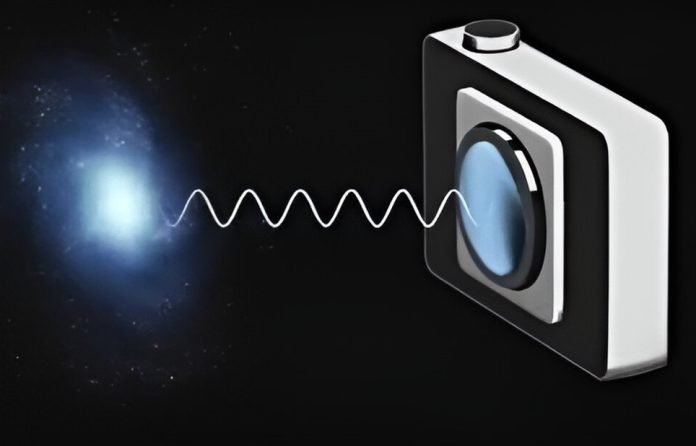
Have you ever tried taking a photo in the dark and ended up with just a black screen?
Well, scientists are working on that problem, but at a much more advanced level.
Researchers at the National Institute of Standards and Technology (NIST) and other institutes have just made a super special camera that can detect even the faintest of lights, like a lone firefly in a vast, dark forest!
What’s so special about this camera?
This isn’t your typical camera. It’s a superconducting camera, which means it works best at super cold temperatures.
Why?
Because in these chilly conditions, electricity flows smoothly without any hiccups, making the camera incredibly sensitive to light.
This new camera boasts an impressive 400,000 pixels. That’s 400 times more than previous cameras of its kind!
More pixels mean clearer images, especially when capturing very dim light sources, whether that’s far-away galaxies or even tiny parts of our brains.
How does it work?
The magic happens when a tiny particle of light, called a photon, hits the camera.
In the super cold environment of the camera, when a photon strikes one of the camera’s many pixels, it causes a small change in the flow of electricity.
That change acts as a signal which tells the camera, “Hey, light hit me here!” This camera is so sensitive that it can detect even a single photon.
But there was a big challenge to overcome. When adding more pixels to the camera, it became difficult to connect each one to its own wire for reading the data.
Imagine having to plug in 400,000 separate earphones into 400,000 music players. Sounds messy, right?
The genius solution the team came up with was inspired by the game tic-tac-toe. They organized the pixels in rows and columns. Instead of connecting each pixel separately, they could read data from a whole row or column at once.
This meant they needed far fewer wires. It’s like listening to a whole orchestra with just one or two microphones!
When a photon hits a pixel, it sends a signal down the row and column wires. By measuring the timing difference of the signals, the camera can figure out exactly which pixel was hit by the photon.
This breakthrough has opened up a lot of potential uses for the camera. In just a few weeks, the team increased the number of pixels from 20,000 to 400,000. And they believe they can add even more! This means clearer and more detailed images in super low light.
Scientists are now aiming to make the camera even more sensitive.
With these improvements, they hope to capture images of distant galaxies, help with advanced computers that use light (called quantum computers), and even assist doctors in looking deep into our bodies using near-infrared light.
In conclusion
The next time you’re struggling to take a photo in low light with your phone, remember that there are scientists out there pushing the boundaries of what’s possible.
Their superconducting camera might just change how we see the faintest glimmers in the universe!
Follow us on Twitter for more articles about this topic.
Source: National Institute of Standards and Technology.



